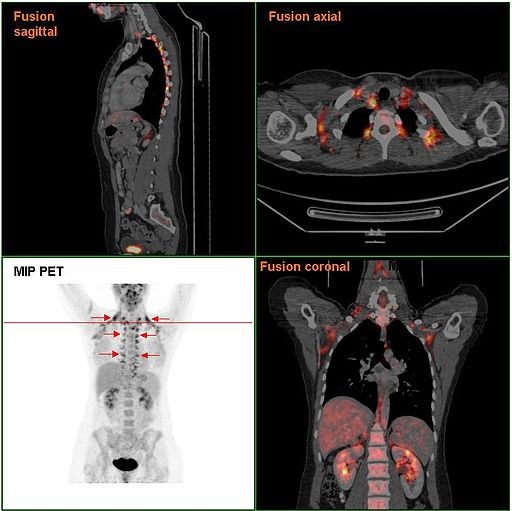February 22, 2015 - Body fat distribution and inflammation may play a role in metabolic derangements and cardiovascular disease in obesity. Findings in a recent study using PET/CT suggest there is involvement of advanced glycation end products (AGEs) and pigment epithelium-derived factor (PEDF) in adipose tissue inflammation.
Investigators designed a study to investigate clinical and biochemical factors associated with area and metabolic activity in the visceral and subcutaneous adipose tissues (VAT and SAT). The 18F-fluorodeoxyglucose-positron emission tomography and computed tomography (FDG-PET/CT) imaging was performed in 251 consecutive subjects for risk screening.

We examined which clinical, anthropometric, metabolic, and inflammatory variables including AGEs and PEDF were independently associated with area and metabolic activity in VAT and SAT. Adipose tissue area was determined with CT, whereas metabolic activity was assessed by FDG uptake expressed as a target-to-background ratio (TBR) of blood-normalized standardized uptake.
The present study demonstrated that area and metabolic activity in VAT and SAT could be differently regulated, suggesting the involvement of AGEs and PEDF in adipose tissue inflammation.




